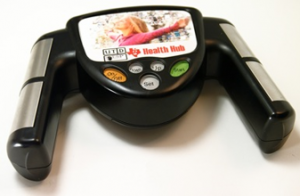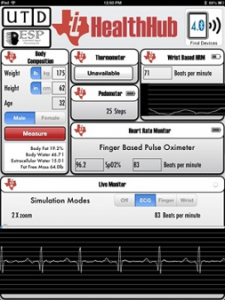We are involved in cutting-edge research focusing primarily on design and development of wearable computers. Our team collaborates with health-science researchers as well as many other top research programs in the US.
Some of our current active projects are:
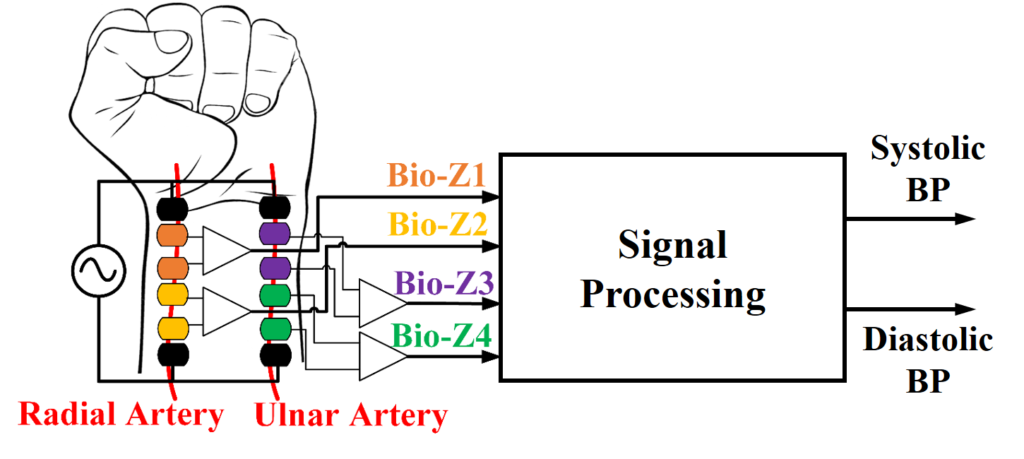
Cuffless Blood Pressure Monitoring using Wrist-worn Array of Sensors
Cuffless monitoring of blood pressure (BP) can help in early diagnosis of cardiovascular diseases. Pulse transit time (PTT) is a metric that correlates with blood pressure and can be measured continuously without an obtrusive and bulky cuff. PTT measurement over the wrist is challenging because of the small PTT values and different sensor placements relative to the arteries of the wrist. Our method is based on using an array of wearable sensors on the wrist to improve the accuracy of physiological sensing. In this regard, relying on multi-modal sensor arrays can help overcome noise issues related to sensor misplacement or motion artifacts. Moreover, an array of sensors can enable more fine-grained, localized sensing for a fuller picture of the underlying physiological mechanisms.
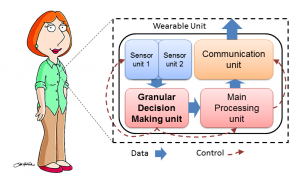
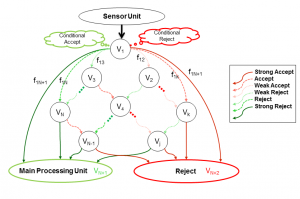
Ultra Low Power Architectures for Wearable Computing
Wearable health monitoring systems offer tremendous potential to improve our lives, yet a number of hurdles must be cleared before they become a reality. The processors and architectures that enable this technology demand a large amount of energy, requiring sizable batteries. The ultimate objective of this research is to create programmable architectures which require no battery and can rely on energy harvesting techniques. To achieve this objective, we seek to reduce power consumption of the processing units by more than two orders of magnitude. This power reduction is accomplished through novel, transformative methodologies to compose and configure programmable, ultra low power, granular decision-making architectures. New algorithms, tightly coupled with signal processing for power reduction in communication blocks are investigated. Research methods to activate and deactivate sensors with the granular decision making architecture attempts to further reduce the power consumption. The methodologies are validated and refined using two clinical case studies.
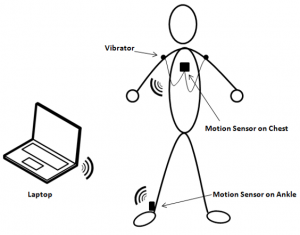
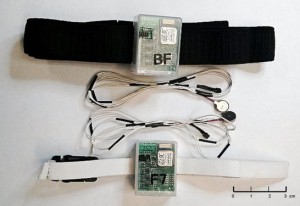
Using Gait and Sway Biofeedback to Reduce Falls in the Elderly
Falls among the elderly are a considerable health concern and the leading cause of injury death. Fear of falling can be equally devastating leading to a loss of confidence, restriction of physical activities, and social isolation. Lateral sway while walking, in addition to other gait parameters have been shown to be associated with a history of falls among the elderly. We are developing a wearable sensor system capable of identifying sway and gait parameters associated with fall likelihood and of providing corrective feedback. The system will characterize several parameter of sway and gait during standing on one leg and walking. The biofeedback system, consisting of auditory and vibratory feedback modules, will provide feedback to reduce the ‘unsafe’ sway. During the proposed study, the robustness and sensitivity of measurements will be established, and the effectiveness of the biofeedback system will be evaluated. The system will be capable of continuous monitoring and will be discrete so that it can be worn continuously, and hence increase confidence and the quality of life among elderly susceptible to falls. Lastly, in future, the system can be used in the clinics as a tool for evaluating the risks of falls, and training users to better maintain their balance.
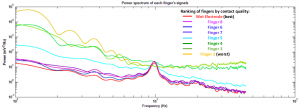
Wearable Dry-contact Reconfigurable Electroencephalography
Dry EEG electrodes enhance the convenience and wearability of brain computer interface (BCI) systems, but the noise induced due to the skin electrode interface reduces the signal quality compared to that of wet electrodes. The aim is to design a wearable dry contact EEG system that estimates and responds to variations in skin contact impedance across different electrodes as well as motion artifacts in real-time in order to improve the signal to noise ratio (SNR)/enhance signal processing accuracy.
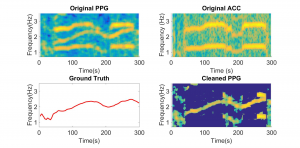
Motion Artifact Rejection Techniques for Physiological Signals
Wearable electrocardiogram (ECG) and photoplethysmogram (PPG) sensors offer tremendous opportunities to continuously provide physiological observations about the users to the end applications. These sensors however are highly sensitive and vulnerable to human physical motions. The quality of contacts between sensors (ECG electrodes or PPG photo-diodes) and the skin will also impact the quality of the signals. The project aims at design and development of methodologies to reduce or eliminate motion artifact induced noise. Our investigation focuses on noise modeling, signal processing algorithm design for noise reduction and validation in the context of real data.
Wearable Prototypes
Our research often requires the development of wearable systems to be used for experimentation and validations in human-subject studies. We have been considering a large variety of applications such as long term in-home health monitoring, rehabilitative therapy and enhancing the communication capability of the disabled. Our lab develops these systems often from scratch: including system design and architecture, PCB design, firmware, algorithms, signal processing and user interface. This allows us control and creative freedom to explore several research opportunities with access to customize any of those open platform design domains. Brief descriptions, photos and videos of some of the wearable systems developed in the lab can be found below:
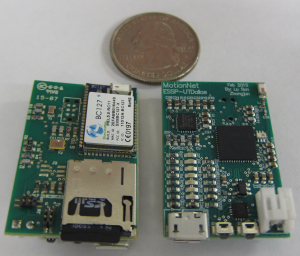
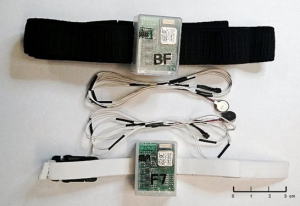
MotionNet
Movement monitoring and gesture recognition have the potential to be used in a number of ways including feedback for rehabilitative therapy, medication adherence monitoring, daily activity level analysis and interaction with smart homes and sensors. The aim of MotionNet is to create a network of small form-factor, low-cost inertial sensors placed on specific locations of the body such that they can be worn comfortably all day and enable all these applications while minimizing the overhead and burden on the user.
Previous versions:
1. MotionStorage
2. VibMotion
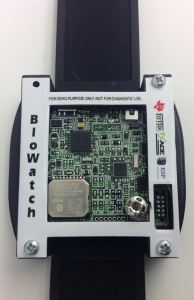
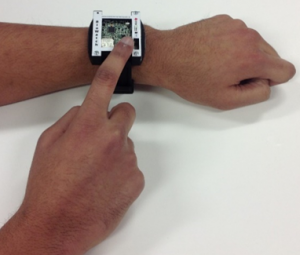
BioWatch
BioWatch allows real-time continuous measurement and streaming of the electrocardiogram (ECG) and photoplethysmogram (PPG). This allows estimation of the heart rate as well as blood oxygenation levels. Moreover, analysis of the ECG stream can lead to diagnosis of heart disease. As the name suggests, the system is built in a watch form factor which makes it convenient to wear and use. This also enables one of the key goals of this project: long-term and pervasive monitoring of vital signs to not only collect more data for longitudinal analysis, but also allow for timely recognition of adverse medical conditions or provide feedback for lifestyle changes.
Currently, one of the most intriguing directions being pursued is non-invasive blood pressure (BP) monitoring with BioWatch. The ECG and PPG in conjunction can provide the pulse transit time (PTT) which is linearly correlated with blood pressure. BP is obviously a widely monitored and well-known indicator of heart health and initial results have shown that BioWatch could provide a much more user-friendly and simple method to continuously measure this important physiological parameter.
Photos and demonstration videos
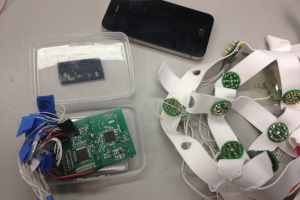
EEG/ECG/EMG Acquisition System
This system based on TI's ADS1299 analog front end is a powerful tool to measure all manner of minute electrical activity produced by the body, including brain signals in the order of a few uV. The appeal of the system comes from the fact that currently it is only about the size of a credit card, but has the capability to acquire 16 channels of signals and use Bluetooth Low Energy (BLE) to transfer this signals wirelessly to a PC or mobile device. The system has already been used successfully for electroencephalography (EEG), electrocardiography (ECG) and electromyography (EMG). In keeping with the ethos of ESP lab, we not only merely collect these signals, but also developed signal processing to enable a number of engaging applications such as brain computer interface (BCI) and sign language recognition through monitoring of muscle activity. There is also significant work ongoing both in the hardware development as well as signal processing to enable the practical use of these devices such as electrode contact reconfiguration and motion artifact rejection.
HealthHub
We collaborated with Texas Instruments (TI) to develop platforms for and showcase a wide variety of analog front ends for personal health monitoring. Among the devices are a body composition monitors (BCM) for hands and feet, chest ECG monitor, finger PPG and blood oxygenation monitor, wrist PPG heart rate monitor, a pedometer and a thermometer. Apart from the PCB design for some of these systems, the ESP lab was also responsible for the MSP430 firmware development and algorithm refinement for most of them. The systems all came with a Bluetooth Low Energy (BLE) radio to stream the data, and our lab also developed an easy to use iPad app to handle the multiple connections simultaneously as well as provide a visual interface for the user to study the measurements in real time.
Open-Source Data and Tools
As part of our research, we often collect large amounts of data from human subjects and also develop custom software platforms to process this data. If we determine such resources to be of use to the research community at large, we make efforts to curate, document, and make these freely available:
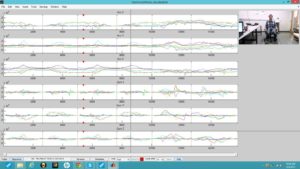
MoST: MotionSynthesis Toolset (http://motionsynthesis.org/)
Body Sensor Networks and wearable computing devices are becoming more prevalent. They are being used for health monitoring, activity tracking, and fitness applications. Collecting the data necessary to develop the new concepts for these systems can be difficult. We present the MotionSynthesis Toolset (MoST) to alleviate some of the difficulty in data collection and algorithm development. This toolset allows researchers to generate a sequence of movements (i.e. a diary), synthesize a data stream using real sensor data, visualize, and validate the sequence of movements and data with video and waveforms.

BCIBench: A BCI Benchmarking Suite (http://www.bcibench.org/)
Increased demands for applications of brain computer interface (BCI) have led to growing attention towards their low-power embedded processing architecture design. Most clinical, wellness, and entertainment applications of BCI require wearable and portable devices. Better understanding of application characteristics in terms of computational complexity, memory usage, and power consumption can lead to more effective system designs for future wearable BCIs. For this purpose, we introduce BCIBench, a benchmarking suite which includes a wide range of algorithms used for pre-processing, feature extraction and classification in BCI applications, and in the related publications we analyzed the architectural characteristics of these algorithms such as performance, data-intensiveness and memory behavior. We provide insights into architectural components that can enhance the performance and reduce the power consumption of BCI embedded systems using these applications.
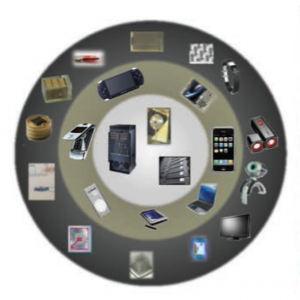
TerraSwarm Research Center
The TerraSwarm Research Center, launched on January 15, 2013, is addressing the huge potential (and associated risks) of pervasive integration of smart, networked sensors and actuators into our connected world. The center is funded by the STARnet phase of the Focus Center Research Program (FCRP) administered by the Semiconductor Research Corporation (SRC). Funding comes from the Defense Advanced Research Projects Agency (DARPA) and the SRC industry partners, including GLOBALFOUNDRIES, IBM, Intel Corporation, Micron Technology, Raytheon, Texas Instruments, and United Technologies.
(See About the Center, News, Overview Paper, and Research Highlights.)

